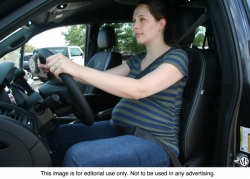Buckling Down on Buckling Up
Seat belts help save lives!
According to the National Highway Traffic Safety Administration (NHTSA), passengers are 64 percent less likely to be seriously injured in an accident and 71 percent less likely to be killed in an accident if they're wearing a seat belt. Nearly half of vehicle passengers killed in traffic crashes in 2013 were unrestrained.
Yet, some drivers and passengers still choose not to wear seat belts. Why is buckling up routine for some, but not for others?
Some people report they are afraid of being trapped in the car during an accident, however, you are more likely to be fatally injured if you're ejected from the car than if you're restrained within the vehicle.
What's the best way to wear a seat belt?
"Make sure the lap belt is low and tight across your thighs, and not across your stomach," says Audrey Eagle, Senior Specialist and Child Passenger Safety Advocate – FCA US LLC (Fiat Chrysler Automobiles). "In a crash, the lap belt is going to hold back your hips -- strong bones that can better handle the force of a crash. The shoulder belt should go across your breastbone and lie between your neck and shoulder."
If comfort is the reason for non-use, change the angle of your seat to take the rubbing off of your neck or move the seat forward or backward to adjust the belt on your lap. Almost all vehicles have a shoulder belt assembly for the front seats that vertically adjusts to make the seat belt fit more comfortably.
Pregnant women should wear their seats belt low and below the belly. Wearing the seat belt across the top of the belly puts both mother and unborn baby at risk of being injured in an accident when the belt engages.
Parents should also ensure their children are using their seat belt properly. Kids simply don't think an accident will happen to them. They sometimes put the seat belt under their arm if it is bothering their neck, or place it completely behind them. Either way, the shoulder belt isn't in the right place and it won't protect as intended. Child safety seat weight and height requirements vary by state.
A child safety seat inspection service locator is available at www.seatcheck.org and 1-866-SEAT-CHECK. AT159637




